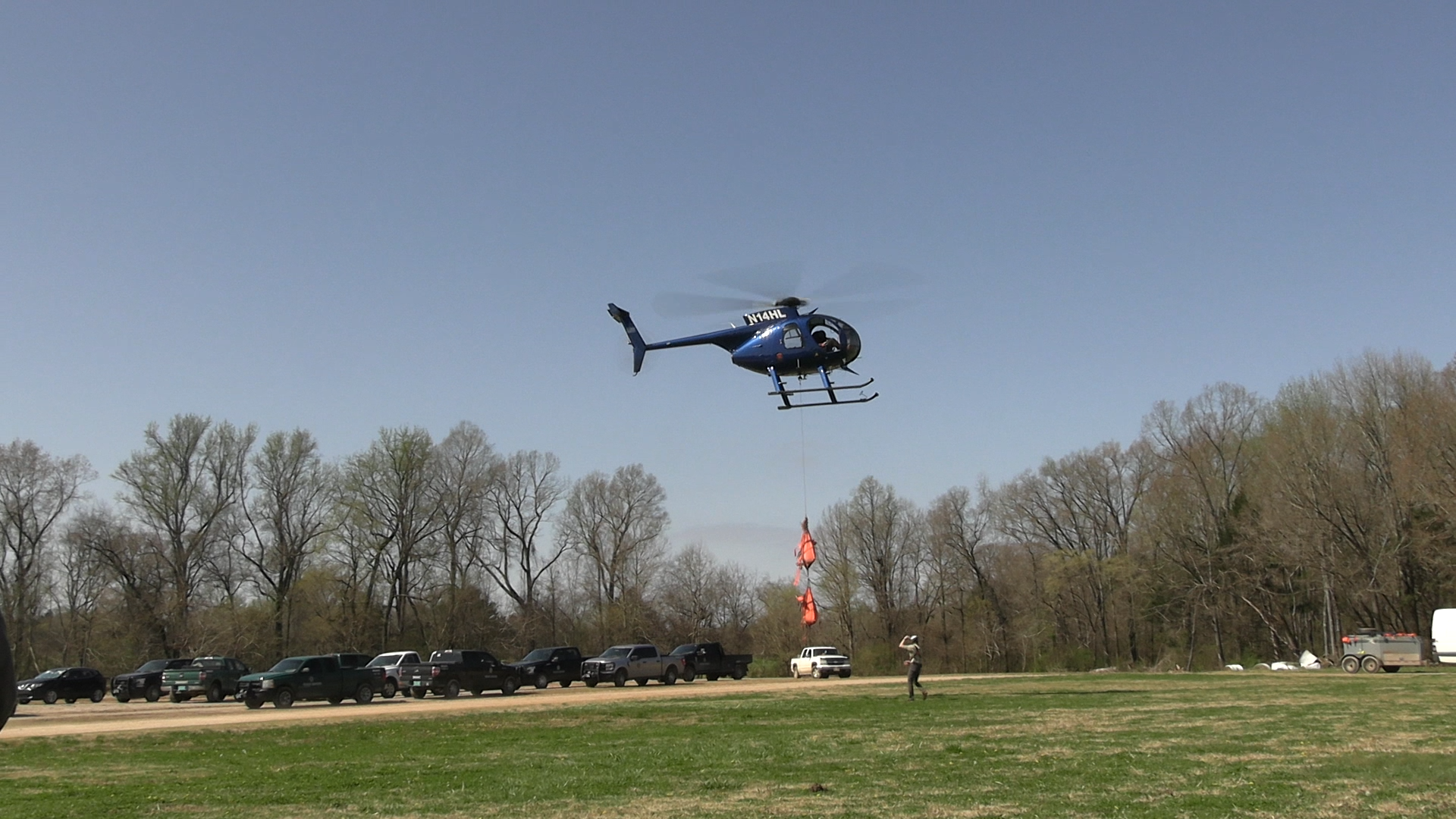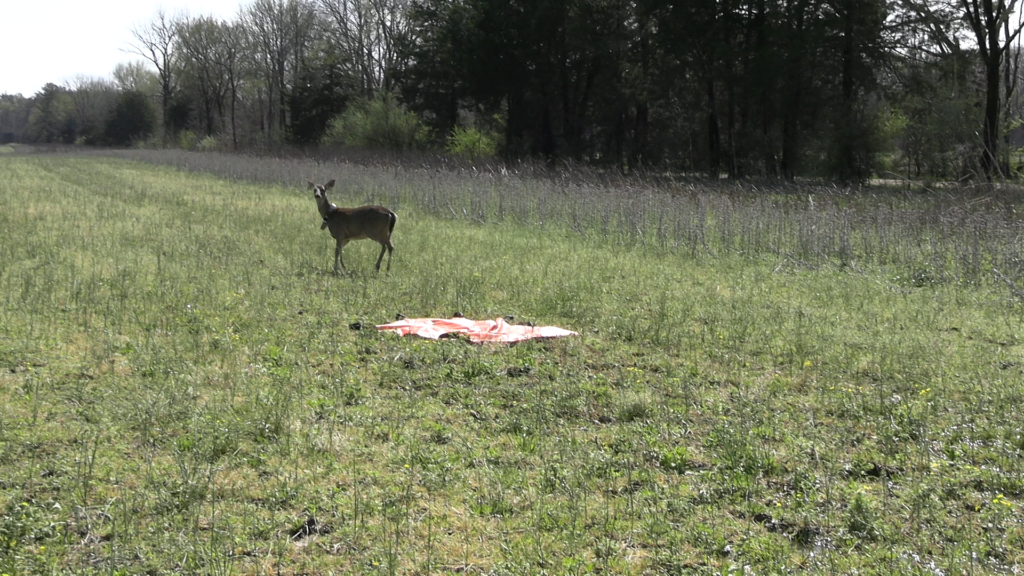
FAYETTE COUNTY, Tenn. — Crews flew a helicopter over the Ames AgResearch and Education Center in March to capture deer for a monitoring study conducted by faculty members of the School of Natural Resources. The study is looking at white-tailed deer movements and transmission rates for diseases including Chronic Wasting Disease (CWD) and SARS-CoV-2, the disease that causes COVID-19 in humans.
Dr. Lisa Muller, Dr. Dan Grove, Dr. Mark Wilber and Justin Kosiewska, a wildlife and fisheries graduate student, worked on the ground with the Tennessee Wildlife Resources Agency to collect blood, hair and other samples before putting GPS collars on the deer and releasing them. The collars allow researchers to monitor deer movements every 30 minutes, providing coordinates of their locations in almost real time. Researchers hope the data will help them understand the disease transmission rates among deer.
Grove said the deer in Fayette County tested positive for SARS-CoV-2 during the 2021-2022 hunting season. “Anytime you’ve got a disease that spills over into wildlife, the disease could change and then spill back over into people and potentially be more infectious and more detrimental,” he said. Researchers are also using the study to look at CWD transmission rates. The disease was first detected in Tennessee in 2018 in both Hardeman and Fayette counties. Grove added, “We can study two diseases at the same time and what disease dynamics may actually be if there are co-infections.”
To capture the animals, a helicopter crew flew up and found deer to herd into an open area. They used a net gun to trap the deer and secured them with eye coverings and hobbles before putting them in a sling attached to the helicopter. They then flew them back to ground crews who collected samples from the deer.
“It all takes about 20-30 minutes,” Wilber said about the collection process. Researchers took nasal and oral swabs for SARS-CoV-2 while also collecting biological information (e.g., sex, age, weight), blood samples, ear punches for CWD, ticks and hair.
After collecting all the samples and data, they carried the deer to an open area to release the animals safely. Muller said they decided to try this capture method after trying other capture techniques in the area and seeing recent success with helicopter capture in a separate elk study by TWRA. “It’s very efficient. They’re able to get on animals fast,” Muller said.

The monitoring is part of a nationwide study by the USDA. Wilber said whitetail deer across the U.S. have tested positive for SARS-CoV-2. He added, “We don’t really know if that’s from spillover of SARS-CoV-2 from humans to deer, which is a contributor, or if it’s driven by deer-to-deer transmission, and that’s important because another strain circulating in deer could kind of spill back and re-infect humans.”
Through using the GPS collars, they hope to learn why deer are testing positive for the virus that causes COVID-19 and how to minimize the expansion of CWD. Muller added, “Hopefully, if we have animals that disperse, meaning they leave the area, we’ll know where they went and use that to see how pathogens are spreading. Hopefully, we can do something to stop it.”
Funding support for the SARS-CoV-2 sampling portion of this project was provided by the U.S. Department of Agriculture (USDA) and Animal and Plant Health Inspection Services (APHIS). APHIS is currently implementing a provision in the American Rescue Plan Act to conduct monitoring and surveillance of susceptible animals for SARS-CoV-2 and enhance its ability to prevent, detect, investigate and control emerging zoonotic diseases using a One Health approach. Funding for the CWD work is provided under the McIntire Stennis project, TEN00MS-113. The deer monitoring project was also made possible thanks to the financial support from TWRA, the School of Natural Resources, UT AgResearch and UT Extension.
The UT School of Natural Resources is part of the Herbert College of Agriculture, UT AgResearch and UT Extension at the University of Tennessee Institute of Agriculture. The curricula focus on a mastery learning approach, emphasizing practical, hand-on experiences. The school’s faculty, staff and students conduct research and extension that advances the science and sustainable management of our natural resources. For more information, visit naturalresources.tennessee.edu.
Through its mission of research, teaching and extension, the University of Tennessee Institute of Agriculture touches lives and provides Real. Life. Solutions. utia.tennessee.edu
